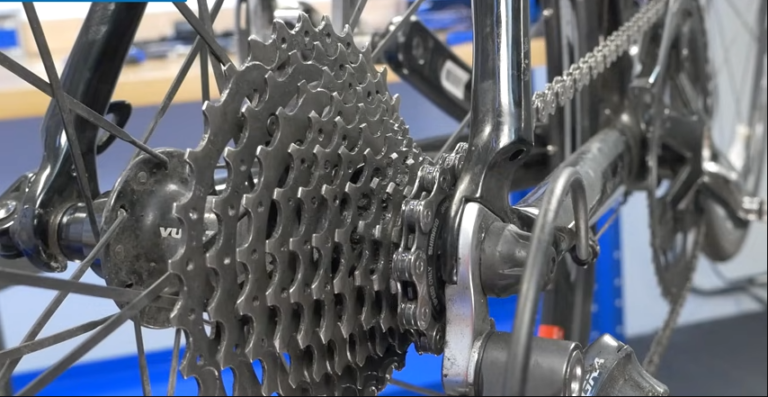Do you think bike chains last forever? No, bike chains don’t last long. If you notice your bike chain wearing off and becoming worn out, it is time to replace the chain with a new one.
It might be hard for some bikers to tell when their bike chain needs replacing. You may need to get more experience on the bike before knowing when the chain needs replacement.
Some bikers may not care about replacing their bike chain until it becomes too late and say, “Wow! My bike chain broke!”
Every bicycle owner faces a problem sooner or later. How frequently should you change your bicycle chain? With a bit of research, it turns out that there is no clear answer to this question.
In the following article, we have tried to outline all the reasons why you need to change your bike chain and all the precautions you need to take before making a purchase.
How Long do They Last?

In general, a good chain will last 2,000 to 3,000 miles or 3 to 4 years. Chains on mountain bikes and electric bikes will get worn out faster. Many factors can influence chain life, such as conditions, speed, weight, and stress.
If you ride your bicycle occasionally, over flat terrains, and don’t include any jumps or other stunts while riding it, then your chain will likely last more than 1,500 miles (or 2,000 km).
On the contrary, if you are an aggressive mountain biker who regularly covers rough terrains and doesn’t shy away from jumping, your bicycle chain will wear out quicker.
In addition to getting more stressed, the chain will also be exposed to mud, sand, and water. These elements can affect the wear of your chain a lot.
Bicycle chains are built from steel links covered with nickel plating. On top of that, they also have some stainless steel pins going through them for added strength.
With time, these elements will wear together and lose their ability to function properly as intended by the manufacturer.
How quickly this happens depends on several factors: how often do you use your bike what type of terrain do you ride your bike on, and how skilled are you at mountain biking.
How Many Miles Should a Bike Chain Last
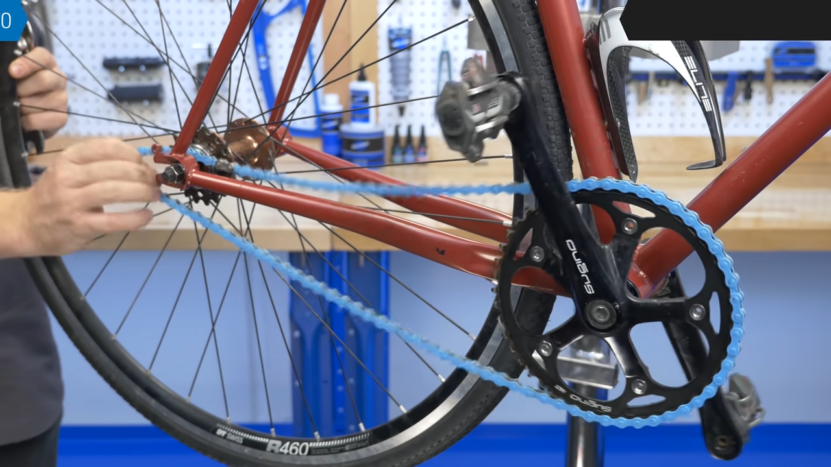
Bicycles are usually used for leisure time or commuting purposes. How often do you use your bike? How far do you go with it every time? How many hills do you climb per session? All these factors play a role in determining the lifespan of your bicycle chain.
A mountain bike rider usually changes their chains after 500 to 1,500 miles. How long a bike chain should last depends on how often you ride it, what type of terrain you cover with it every day, and how good at mountain biking you are.
If you change other parts of your bike regularly (such as tires or brake pads), then changing the bicycle chain should become a habit for you too.
How frequently this happens mainly depends on how many miles per week you cover. To give you a better idea, the average bike chain will last between six to nine months if you ride it at least five times per week.
On the other hand, electric bike chains are likely to last much longer than mountain bike chains. With proper care and maintenance, you can get them to last up to 2,000 to 3,000 miles with ease.
How often do you need to change your e-bike chain? It entirely depends on how many times per day you use it.
How far are your rides? How steep are the paths or hills? How skilled are you at riding an e-bike? All these factors play a role in determining exactly how long your e-bike chain will stay functional.
Replacing a bike chain isn’t a tough job for experienced bikers who know how to do it. All bikes have different types of rear-wheel axle systems in different sizes with some bike chain locks that prevent the bike chain from moving.
Bikers should know how to find bolts and a wrench before they can replace a bike chain. A bicycle chain may last up to 3,000 miles depending on how you ride.
How Often Should I Change My Bike Chain?

People tend to think that the more frequently they change their bike chains, the longer it will last. However, this is not true. How often you need to change your bike chain depends mainly on how often you ride and what type of riding you are doing.
A road bike chain lasts about 2,000-5,000 miles whereas a mountain bike can be used for approximately 5,000-10,000 miles because it is under heavy stress when riding downhill or off-road with lots of bumps in the way.
How Long Does a Bicycle Chain Last Before Replacing It?
On average, a bike chain should last for about 3,000 miles. There are several factors why bike chains need replacement. A bike chain gets worn out when you ride it thousands of miles, especially with mountain bikes and electric bikes.
Other than usage, bike chains get worn out with time even if you don’t use them much because bike chains wear with time even if they sit in your shed or garage.
Factors That Influence Bike Chain Life
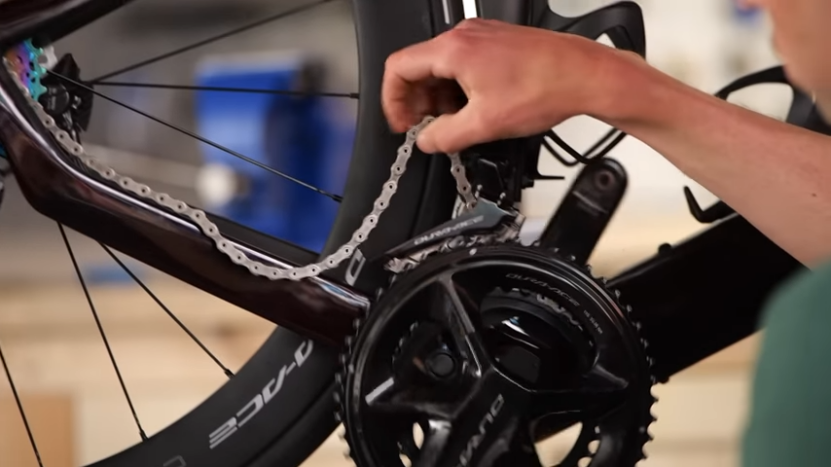
There are many factors that determine the lifespan of a bike chain. Factors include the condition of the bicycle, riding style, the weight of the rider, the terrain you ride on, and weather conditions among other things.
Industrial lubricants are usually very effective in reducing friction to prolong the life of your bike chain. If your bike runs perfectly without chain suck or other problems then consider yourself lucky because this implies that you have an excellent quality chain with little wear and tear to worry about.
If you’ve got a high-quality chain made with superior materials, it will undoubtedly provide its services for a much longer time than a cheap chain. Riding super-fast regularly also puts a toll on the chain as the friction accelerates wear and tear.
Rainy riding conditions should not be a worry as long as you maintain your chain properly. If you know how to clean a bike chain, then the wet weather should not pose a problem for you, provided that it doesn’t rain too much. Riding in heavy mud is another thing that wears out chains quickly due to the compactness of the dirt.
Riding condition is also a significant factor that affects chain life. If you ride in the rain and snow frequently, you can’t expect your chain to get worn faster. Your weight also impacts the overall lifespan.
Heavier weights put more pressure on the entire bicycle, including the chain. So even if you’ve got an average-quality bike with low-grade materials, all these factors combined won’t influence its lifespan that much.
You must also consider whether or not you clean your chain regularly because dirt is harder on chains than anything else. If you don’t keep the chain clean, then the problem will be more serious.
Sometimes, there are even some bits of gunk on a new chain which is why it’s considered to be an entry-level model for beginners. Riding in wet or dirty conditions may accelerate wear even further so make sure to wipe it dry after every ride if you want to get the best out of your bike chain.
Last but not least, consider whether you store your bicycle indoors or outdoors. Leaving it outside makes it more prone to rust and corrosion depending on where you live and how good your house insulation is.
Whereas keeping it indoors reduces the likelihood of corrosion, but also increases the risk of dust accumulating on it. If you don’t have a garage or space to store your bicycle inside the house, then consider cleaning it thoroughly before placing it under any cover.
Although many people think that weather has no effect on bicycles because they are made with non-rusting alloys, this is not true at all.
It’s harder to notice this side effect unless you’re wearing high-quality cycling clothes specifically designed for cold conditions. The cold makes your chain stiffer which can speed up wear and tear if you often ride in the winter months.
That’s about all there is to say about factors that affect bike chain life because most people end up buying the wrong type of bike for their weight and riding style. You can’t expect to get the best out of your bike chain if it’s not made with the highest quality materials available.
When choosing a bike, you must also consider whether you’re going to use it every day or only once in a while. If you’re planning on using it fairly regularly, then choose one that has a durable construction that will last longer than cheap bicycles.
A big problem is that many people opt for entry-level models which are clearly not meant for constant long-term use, especially when riding at high speeds over rough terrain.
Considering all these factors combined will help you understand how different types of bicycle chains work and why they break down faster than others depending on their design and material.
As long as you take good care of your chain, then it should last for a couple of years without any problems. Just follow the instructions on how to clean bicycle chains and avoid riding under harsh weather conditions or traveling at speeds that put too much strain on the bike and materials used in construction.
You must also remember to renew the lube every week and avoid water or dirty conditions because they speed up wear and tear even more than usual. After all, this is what you pay for when opting for quality over price so make sure to keep that in mind if you want to prolong your bicycle chain life as much as possible.
How to Know If Your Bicycle Chain Needs Replacing
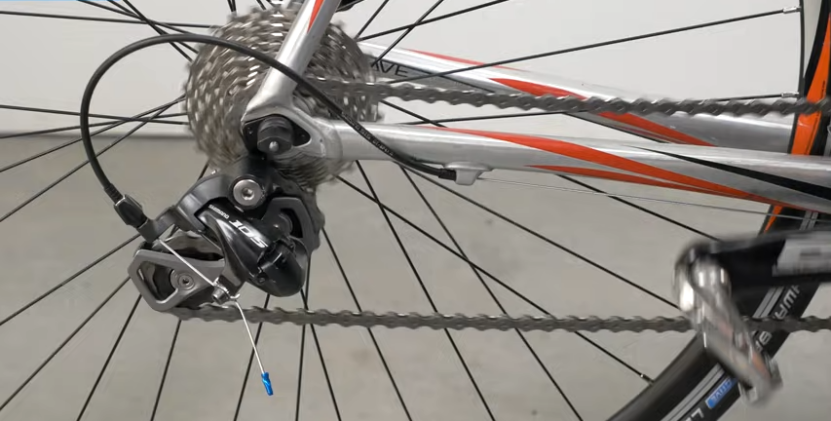
The manual measuring method is simple enough to use. You do not need any special tools other than your hands, but you should have some experience working with chains prior to using this method. First, you will need to measure your chain while it is still on the bike and loaded with gears.
How much slack should you be able to add between the wheel and the chain? Well, 1/2″ is a good rule-of-thumb limit for mountain bikes, while road bikes work best with 1/4″.
If there’s too little slack in a chain that has been ridden heavily or for an extended period of time, then it may be time to replace it. How can you tell if your chain is too loose? Take the chain off the bike and carefully measure it with a ruler or calipers so you can see how many links it actually contains.
A new bicycle chain should measure out at exactly one inch between each of the rivets when loaded with gears How can you tell when it’s time to upgrade to a new chain? First, check that your old chain measures in at least one inch when still on the bike.
If it does then this is not yet an immediate need for replacement, but nevertheless, this is when you will want to start considering doing so in preparation for when you are ready.
How Much Does It Cost to Get a Bike Chain Replaced?
How much does it cost to get a bike chain replaced? How much does it cost to have a bike chain changed? The average price you can expect is $15 per bicycle chain. Some factors influence the final amount of money you will pay for replacing your bike’s chain.
A stretched-out bike chain has shifted links which are no longer straight lines because the rollers are not touching each other perfectly anymore. You will also notice that it has become very shiny due to an increased number of pin-like sections between the rollers which means more space for dirt particles and water drops. It’s making noise while being ridden, so it has to be changed.
If you want this job done fast, then the price may increase exponentially, if presented with an emergency situation. Also, the experience of the mechanic determines the overall price because some are experienced enough not only to work quickly but also avoid small mistakes which will save more time in terms of correcting them.
When you use your bicycle for the first time, you usually check its condition of parts. This is a standard practice because it helps to prevent major inconveniences in the future. Another part of your bike that requires proper maintenance every once in a while is the chain.
What Happens If You Don’t Replace a Worn Bike Chain?

Is it really bad? Well, this type of neglect can turn out deadly in just a few minutes. What if you’re in the middle of nowhere and your bike suddenly stops working because you didn’t maintain its parts?
Bike chains are better known for wearing out after extended use. What happens if you don’t replace them when they become too worn out?
It’s easy to take the chain for granted, but it is an important part of your bike, and if it wears out without being replaced, there can be serious repercussions. Here are some of the dangers awaiting you if you purposely ignore the state of your bike chain.
A worn-out bike chain means that it is stretched out from strenuous use. When this happens, its ability to hold to your wheel cog decreases. What happens next is a frustrating situation where your gears can slip or switch while you’re pedaling.
This action gives the impression that the bike is trying to jump forward. A worn-out chain can have severe consequences as it snaps mid-ride. What if it snaps when you’re riding through a remote area?
A snapped bike chain has serious safety concerns because it throws off the balance of your entire bike, so instead of stopping safely, your motion will probably send you flying forward, bringing along all your momentum from riding at high speeds.
If the snapping occurs on a downhill slope, which often happens, then you might suffer fatal injuries due to the sheer speed alone. Even if you survive such an accident with no broken bones, it will probably take a long time before you can walk again. What if the accident occurs on a busy street?
How much wear your chain gets will depend on how often you clean and lubricate it. You can’t make your chain last forever, but you can make sure that it lasts a pretty long time. Keeping this component in good condition also means you won’t have to buy a new cassette every time you replace it.
How to Make Your Chain Last Longer and Reduce Chain Wear?
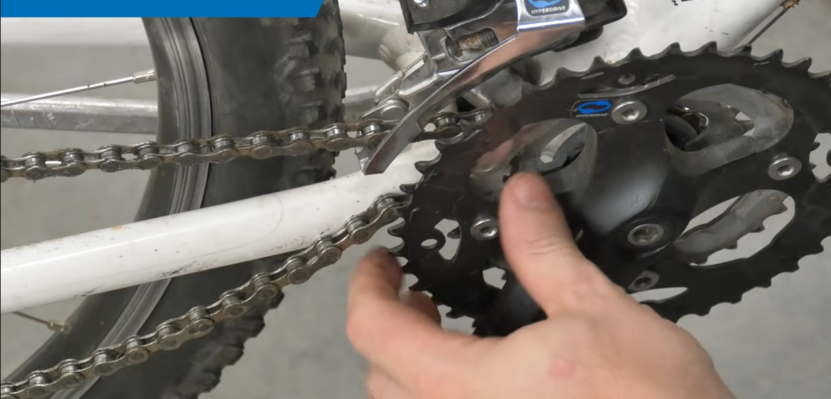
If your bike chain doesn’t get enough attention and cleaning, it can cause more wear on the rest of the parts in the drivetrain, meaning that they will need replacement earlier than usual. It is beneficial to keep your bike clean and lubricated properly after every ride.
Good News! Cleaning a bike chain is an easy task which anyone can do without any experience. All you need is a few simple tools and supplies such as rags, degreaser or soap solution, oil or wax-based lubricant (WD-40 or Boeshield T9). You may also use a stiff-bristled brush.
How To Clean A Bike Chain
Step First, you need to remove it from your bike, either on a work stand or by removing the wheel and tilting the bike frame over on its side stand.
Step Two: Removing your chain is easy as well; simply shove one of those old plastic spoons between the chain links and lift it up, then pull until the chain comes off.
Step Three: Keep in mind that this is what will be happening inside of your drivetrain, so something underneath where your bike stands should be used to catch drips.
Step Four: First you have to apply some degreaser or soap solution on the rag and wipe down the top of your chain, which is where most of the dirt will be.
Step Five: Use a toothbrush for any harder-to-reach places
Step Six: Let it dry
How To Lubricate Your Chain
Oil-based lubes are much better than waxes because they last longer. Apply oil-based lube according to the manufacturer’s instructions. The process of how to lubricate your bike chain completes in three steps.
Step One: You can use a drip oiling system How To Lubricate Your Chain
Step Two: Use the top of your derailleur as a guide for how far up to fill How To Lubricate Your Chain
Step Three: Every two weeks check and clean off any residue How To Lubricate Your Chain Keep your drivetrain as clean as possible.
What About Rotating Chains Though?

What rotating chains mean, how effective it is and what other benefits rotating chains can have for your biking experience overall. Before we start discussing the merits of rotating chains, let us first explain what exactly rotating chains mean.
Rotating chains can be swapped between two or even three different chains to increase the lifespan of your drivetrain as a whole.
Many people resort to this method instead of buying a new chain whenever their chains wear out, and there is a good reason for it. The idea is that we use multiple chains and we swap between them every 500 miles or so.
What results from that is that you will have less wear than if you would just cover the distance with one single chain, which in turn will save money in the long run compared to simply making do with whatever happens to be around at any given time?
To make this plan work though, it’s imperative that all three (or two) chains are the exact same length.
So, rotating chains can be a great way to save money and replace only the part that is worn out. What other benefits though? What about improved performance?
It’s true that if you rotate your chains all over the place, you will experience less wear on any given chain than by just using one single chain for too long. What follows from this is better shifting performance as well as more efficiency because of reduced resistance.
What does this mean in practice though? That depends on how much you ride your bike and also on what type of bike you have. If you are biking every day, for example, it means that rotating chains could actually prolong the lifespan of your drivetrain system. It prolongs it for many days or even weeks before any part of it shows significant wear.
What does this mean for your overall biking experience? That it will be better, more fluid, and for many people, less expensive in the long run.

